Abstract
In a survey conducted in 1978 of a 10 percent stratified random sample of Wisconsin migrant agricultural workers, the self-perceived health status and the medical utilization patterns of the Hispanic workers in the sample (92 percent of the total group) were examined.
Based on prior research with national populations, it was hypothesized that older, female, better educated, and English-speaking workers would have higher utilization levels. Utilization was measured by four variables: a physician or clinic visit in the preceding year and ever having had a general physical examination, a dental visit, or a vision checkup.
The survey results, based on unverified self-reported data, indicated that in general the use by migrant workers of health services, especially preventive care, was low compared with other populations. Some of the hypotheses that were tested were confirmed by the survey data: older workers were more likely to have visited a physician in the preceding year and to have had a routine physical examination; women were more likely to have seen a physician in the preceding year and to have had a dental visit; workers who spoke English as well as Spanish (usually the younger workers) were more likely to have been to a dentist and to have had a vision checkup. Educational attainment was not related to any of the utilization measures.
Besides the demographic factors related to medical utilization, the survey revealed barriers to care related to time, distance, language, and money. Access to a migrant health clinic and the availability of Medicaid were related to dentist visits and vision checkups. Thirty-eight percent of the migrants had used migrant health clinics; only 14 percent had used Medicaid to pay medical bills; about one in five had no means of payment except his or her own funds.
Full text
PDF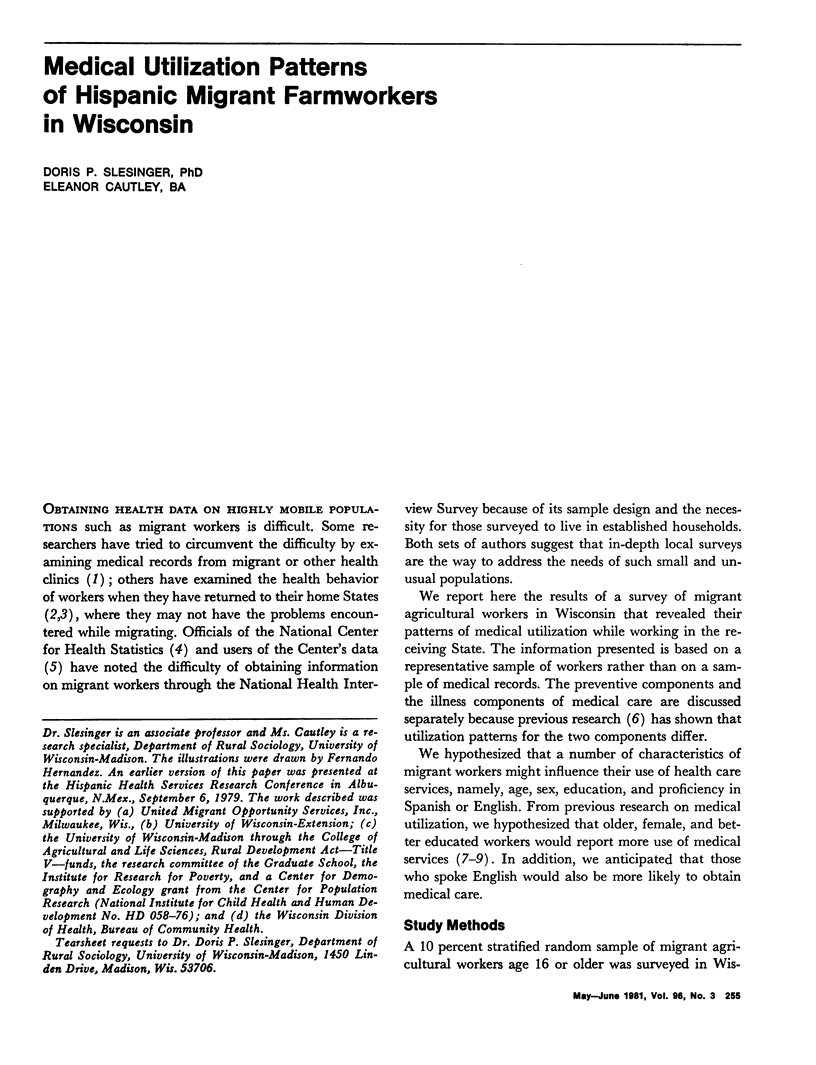
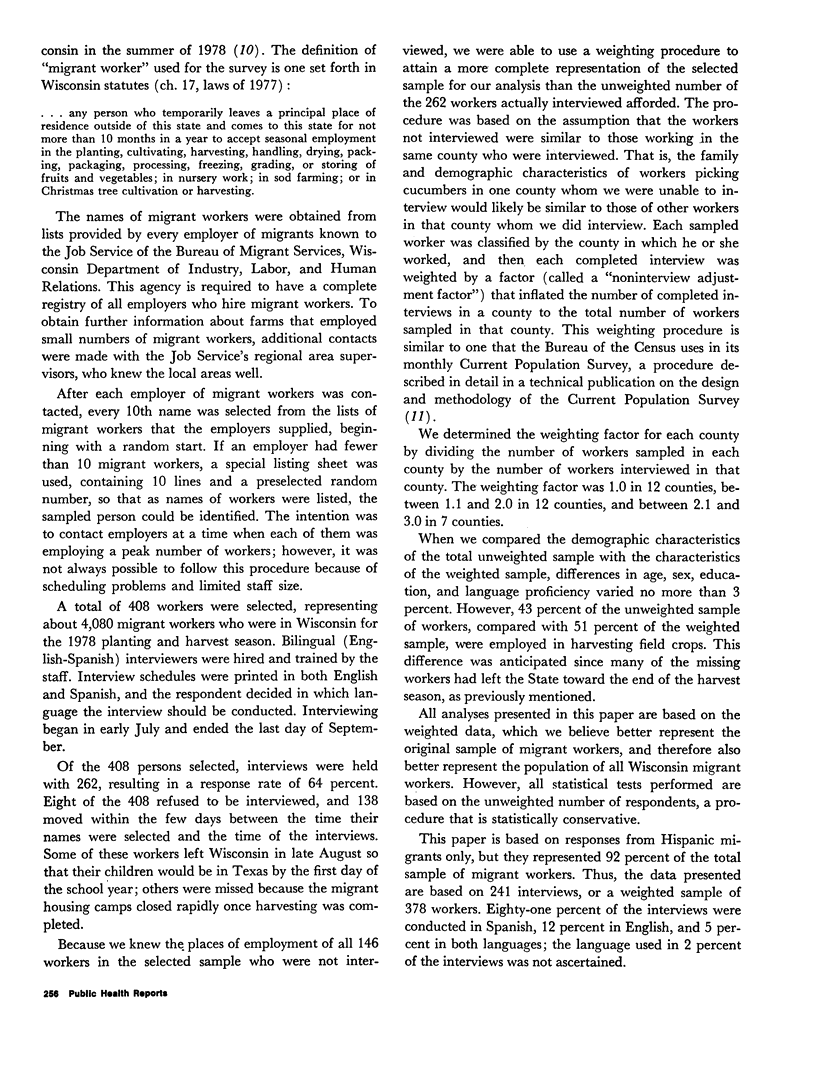
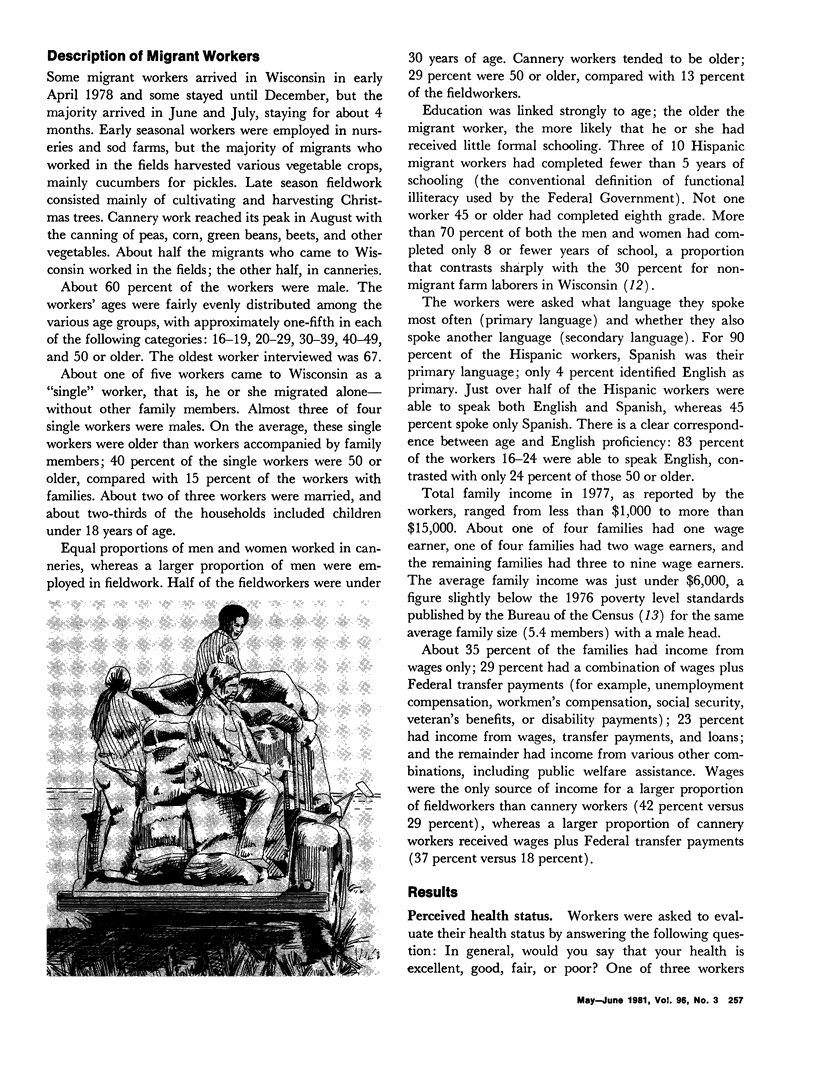
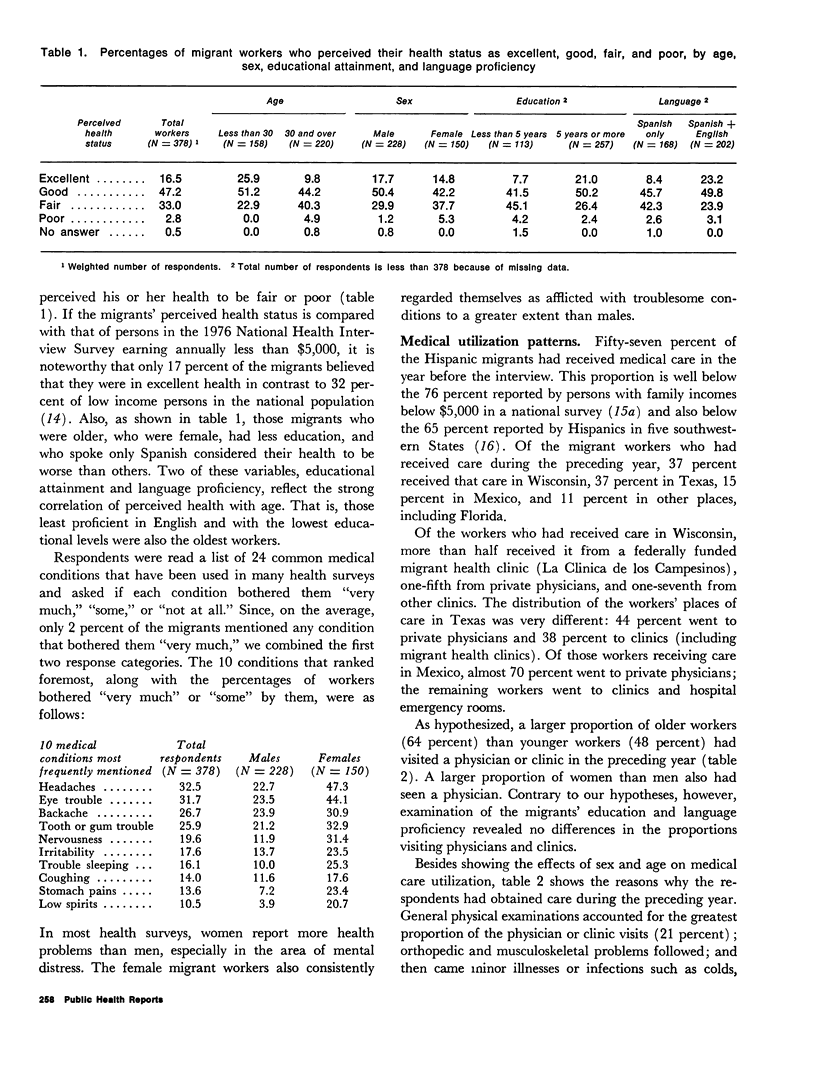
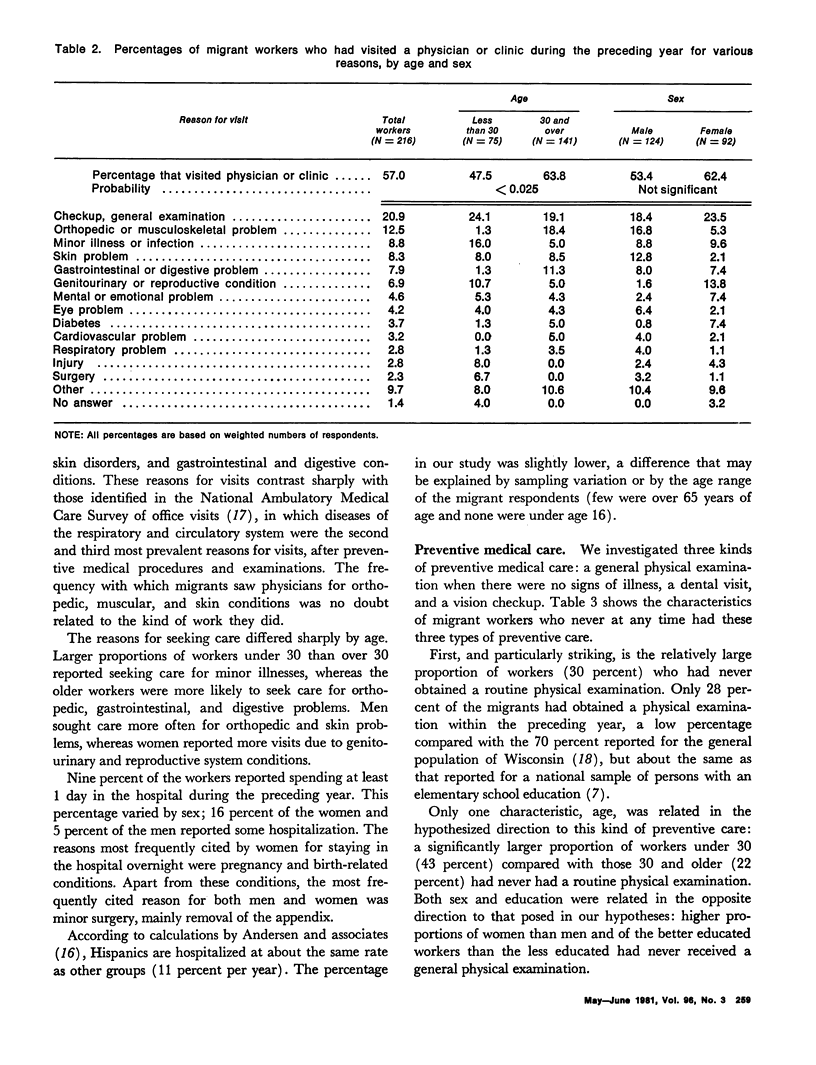
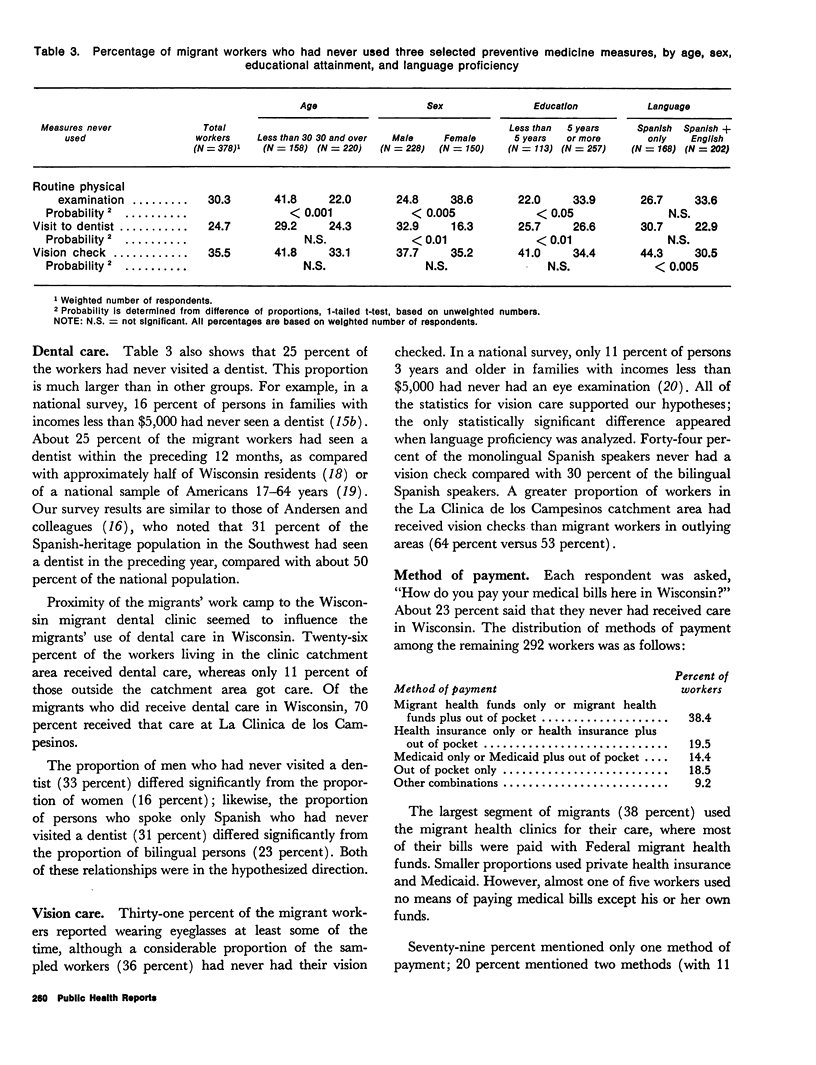
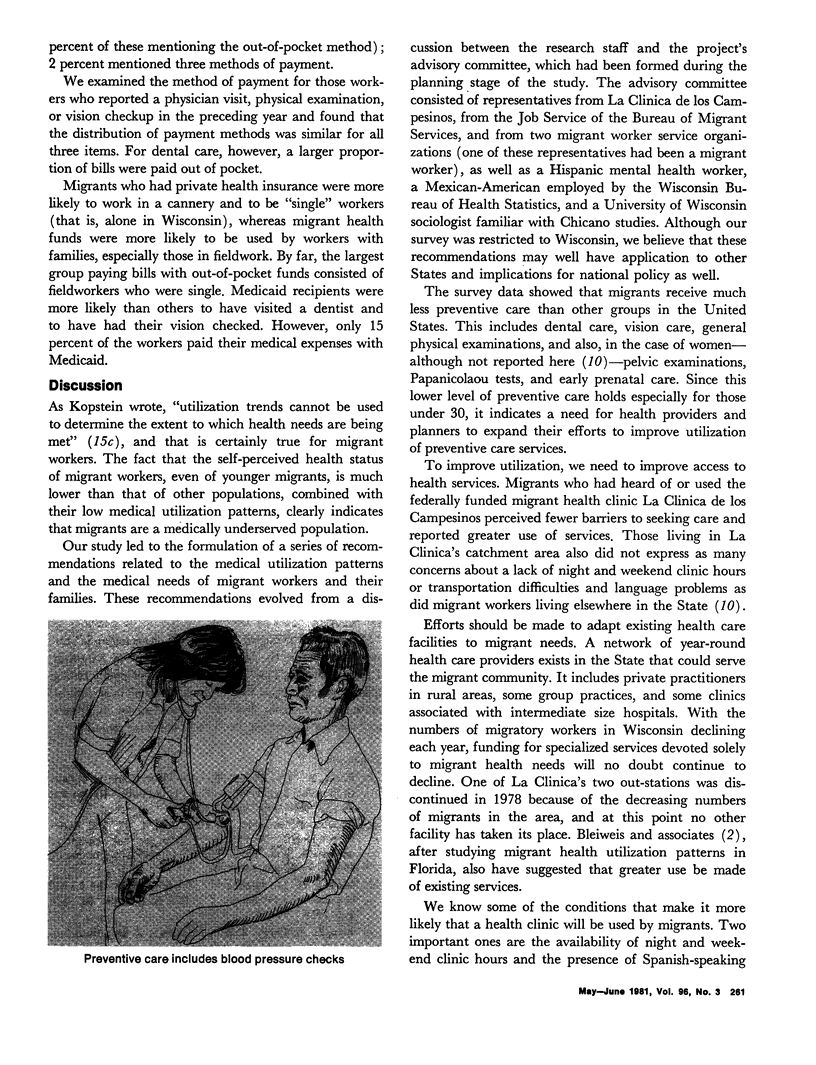
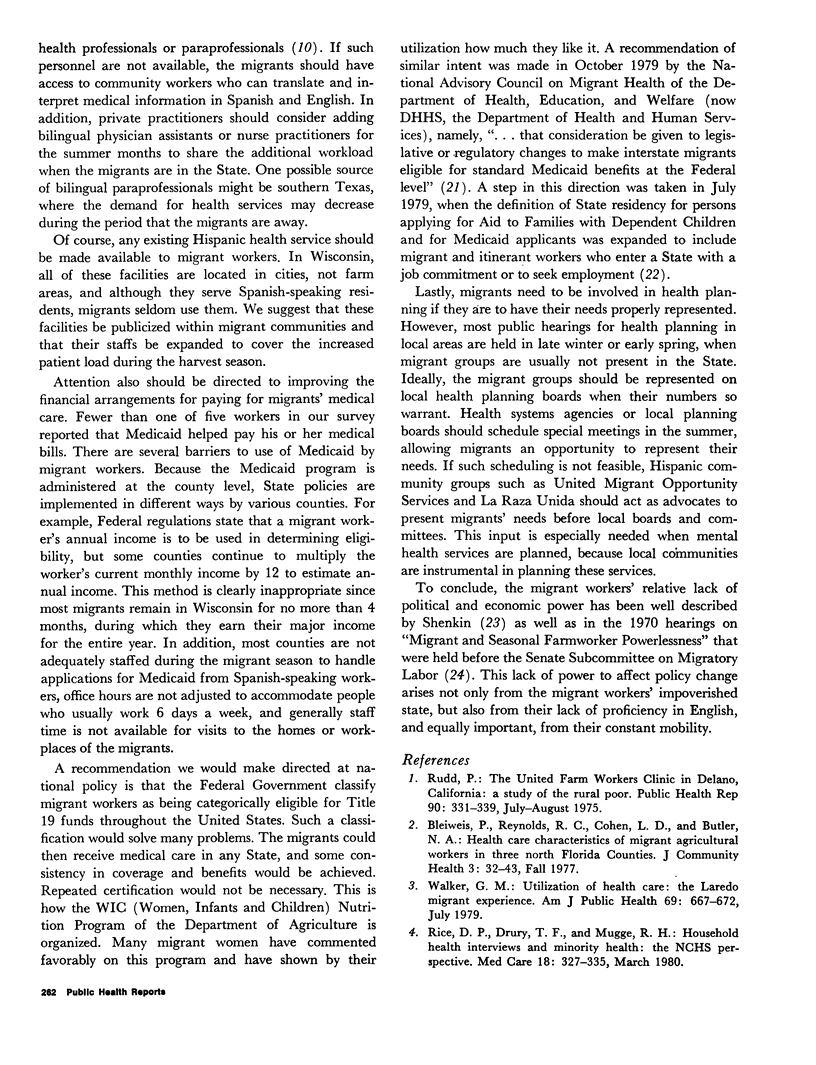
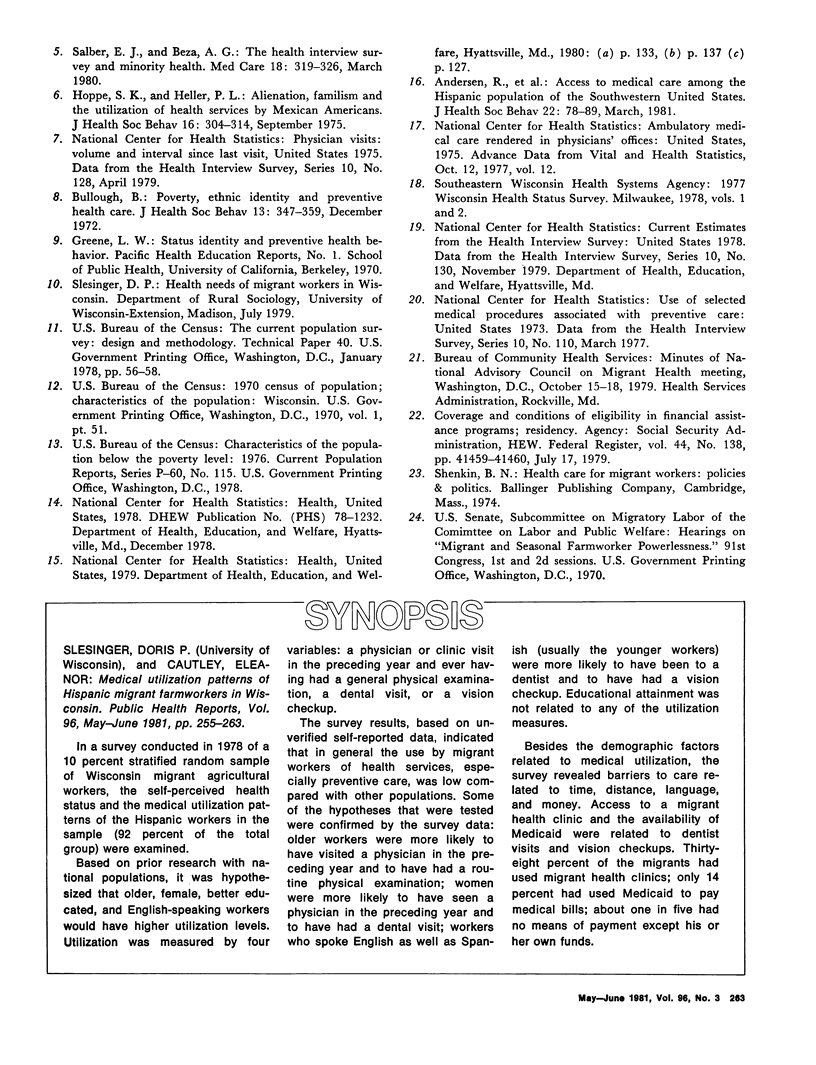
Selected References
These references are in PubMed. This may not be the complete list of references from this article.
- Andersen R., Lewis S. Z., Giachello A. L., Aday L. A., Chiu G. Access to medical care among the Hispanic population of the southwestern United States. J Health Soc Behav. 1981 Mar;22(1):78–89. [PubMed] [Google Scholar]
- Bullough B. Poverty, ethnic identity and preventive health care. J Health Soc Behav. 1972 Dec;13(4):347–359. [PubMed] [Google Scholar]
- Hoppe S. K., Heller P. L. Alienation, familism and the utilization of health services by Mexican Americans. J Health Soc Behav. 1975 Sep;16(3):304–314. [PubMed] [Google Scholar]
- Rice D. P., Drury T. F., Mugge R. H. Household health interviews and minority health: the NCHS perspective. Med Care. 1980 Mar;18(3):327–335. doi: 10.1097/00005650-198003000-00007. [DOI] [PubMed] [Google Scholar]
- Rudd P. The United Farm Workers clinic in Delano, Calif.: a study of the rural poor. Public Health Rep. 1975 Jul-Aug;90(4):331–339. [PMC free article] [PubMed] [Google Scholar]
- Salber E. J., Beza A. G. The health interview survey and minority health. Med Care. 1980 Mar;18(3):319–326. doi: 10.1097/00005650-198003000-00006. [DOI] [PubMed] [Google Scholar]
- Walker G. M., Jr Utilization of health care: the Laredo migrant experience. Am J Public Health. 1979 Jul;69(7):667–672. doi: 10.2105/ajph.69.7.667. [DOI] [PMC free article] [PubMed] [Google Scholar]


